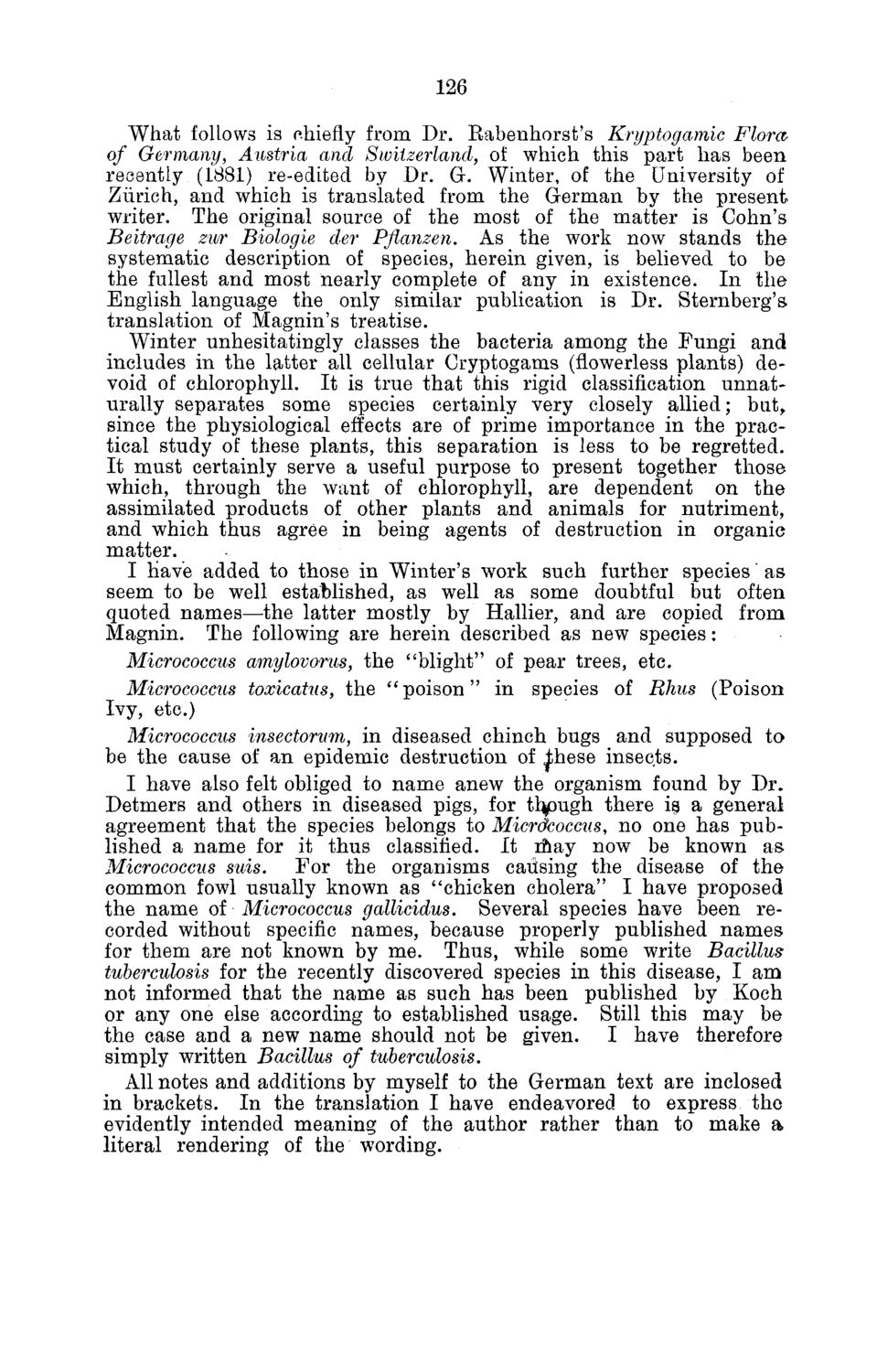| |
| |
Caption: Board of Trustees Minutes - 1882
This is a reduced-resolution page image for fast online browsing.

EXTRACTED TEXT FROM PAGE:
126 What follows is chiefly from Dr. Kabenhorst's Kryptogamic Flora, of Germany, Austria and Switzerland, of which this part has been recently (1881) re-edited by Dr. G. Winter, of the University of Zurich, and which is translated from the German by the present writer. The original source of the most of the matter is Cohn's Beitrage zur Biologie der Pflanzen. As the work now stands the systematic description of species, herein given, is believed to be the fullest and most nearly complete of any in existence. In the English language the only similar publication is Dr. Sternberg's translation of Magnin's treatise. Winter unhesitatingly classes the bacteria among the Fungi and includes in the latter all cellular Cryptogams (flowerless plants) devoid of chlorophyll. It is true that this rigid classification unnaturally separates some species certainly very closely allied; but, since the physiological effects are of prime importance in the practical study of these plants, this separation is less to be regretted. It must certainly serve a useful purpose to present together those which, through the want of chlorophyll, are dependent on the assimilated products of other plants and animals for nutriment, and which thus agree in being agents of destruction in organic matter. I Have added to those in Winter's work such further species as seem to be well established, as well as some doubtful but often quoted names—the latter mostly by Hallier, and are copied from Magnin. The following are herein described as new species: Micrococcus amylovorus, the "blight" of pear trees, etc. Micrococcus toxicatus, the " p o i s o n " in species of Rhus (Poison Ivy, etc.) Micrococcus insectorum, in diseased chinch bugs and supposed to be the cause of an epidemic destruction of ihese insects. I have also felt obliged to name anew the organism found by Dr. Detmers and others in diseased pigs, for tl^)ugh there i§ a general agreement that the species belongs to Micrdcoccus, no one has published a name for it thus classified. It may now be known as Micrococcus suis. For the organisms caiising the disease of the common fowl usually known as "chicken cholera" I have proposed the name of Micrococcus gallicidus. Several species have been recorded without specific names, because properly published names for them are not known by me. Thus, while some write Bacillus tuberculosis for the recently discovered species in this disease, I am not informed that the name as such has been published by Koch or any one else according to established usage. Still this may be the case and a new name should not be given. I have therefore simply written Bacillus of tuberculosis. All notes and additions by myself to the German text are inclosed in brackets. In the translation I have endeavored to express the evidently intended meaning of the author rather than to make a literal rendering of the wording.
| |